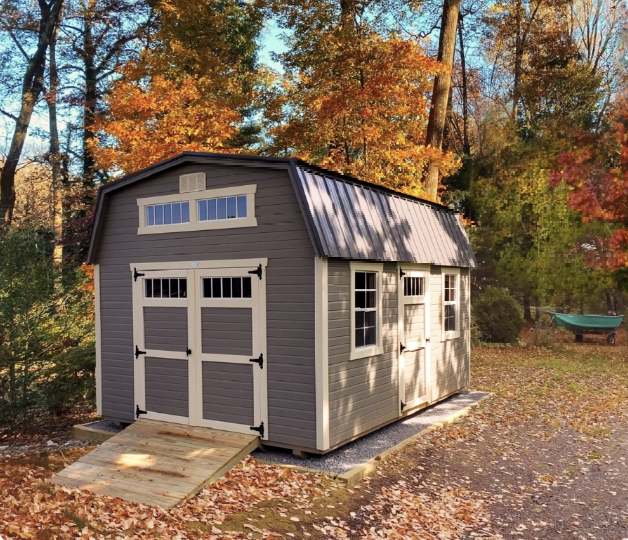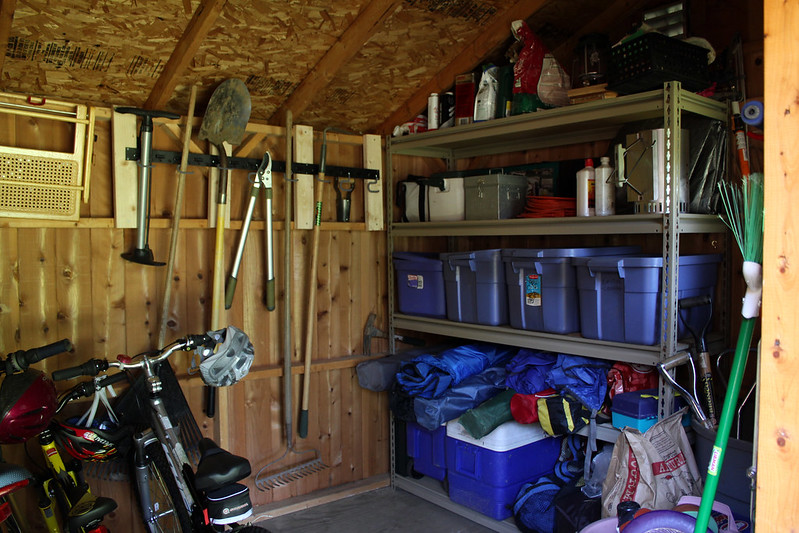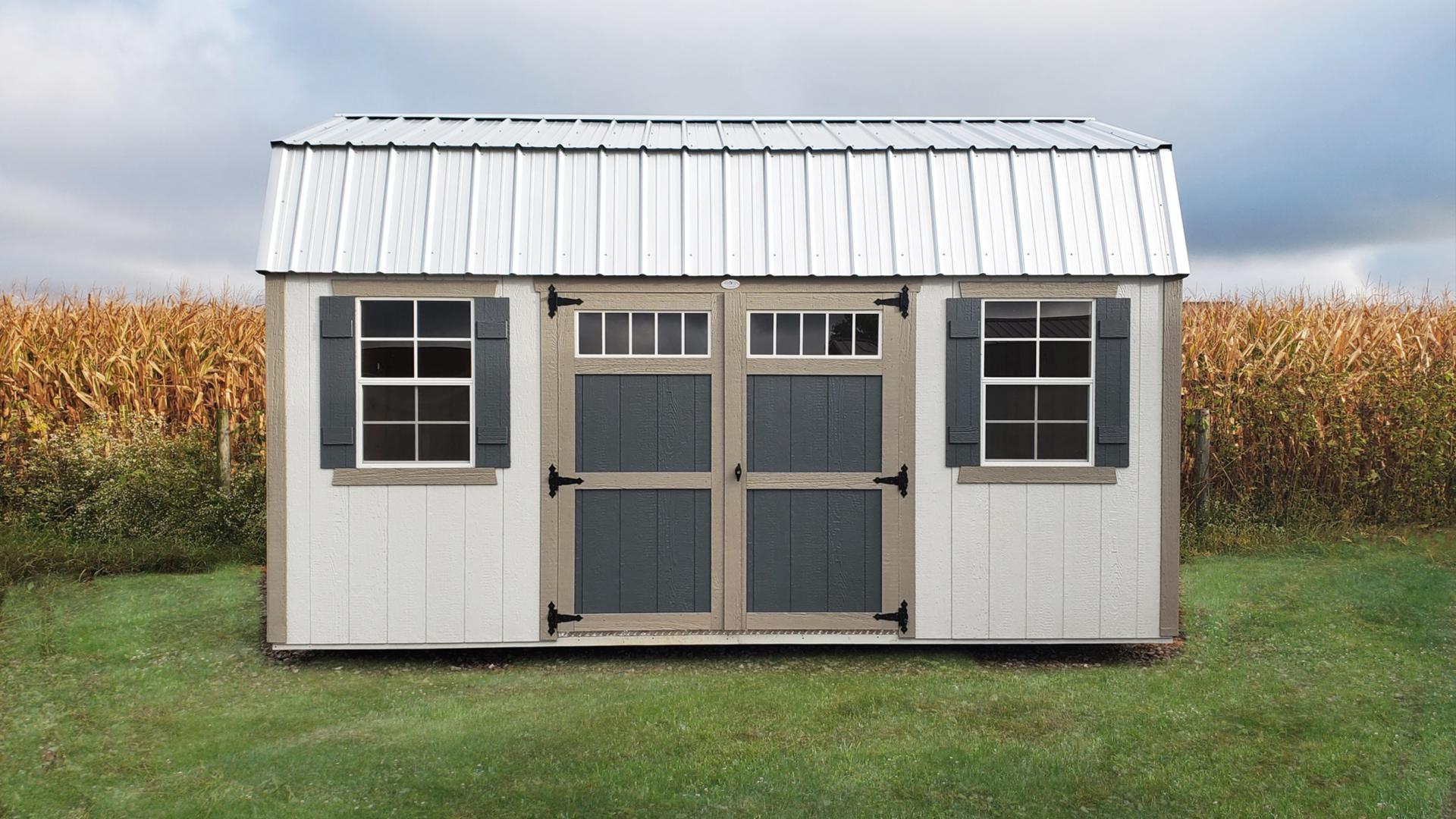Your garden shed, hunting cabin, or storage barn is a sizable investment - an investment you’ll want to last for many decades. To make your shed last a lifetime, you’ll need to maintain its condition throughout the years with yearly upkeep.
The summer is a perfect time to perform yearly maintenance on your outdoor shed. After an icy winter and rainy spring, you can easily spot damage caused by seasonal weather during a clear, summer day. Follow this guide through 11 steps to maintain your storage shed. (Plus a bonus at the end!)
1. Check for Signs of Water Damage
Water is perhaps the biggest threat to your shed. Water will make your tools rusty, weaken the structural integrity of your shed by rotting the wooden frame or floorboards, and promote mold growth, which increases your risk of inflammatory disease.
After the ice of winter and the heavy rain of springtime, it’s best to inspect your shed for signs of water leaking through. Discoloration in your walls, floor, or ceiling, damp tools or other items in your shed, and visible cracks or holes are all signs of water damage that must be addressed.
Depending on where you find water damage you may need to raise your storage shed higher off the ground, patch holes in your siding, or replace shingles. You can always consult a contractor for help.
2. Inspect Your Shed’s Roof and Clean the Gutters
Grab a ladder and head up to your shed’s roof next. You’ll want to inspect your shed’s shingles for signs of damage that could lead to future water damage. The earlier you catch a potential issue, the less time and money you’ll spend on shed upkeep in the future.
Another important part of your shed’s roof to maintain are its gutters. Keep them clear of fallen debris from springtime thunderstorms that prevent water flow. You’ll also need to ensure water flows properly down the waterspout and that it’s fastened properly to your shed to prevent icicles forming next winter. Country Cabin owners don’t have to worry about gutters because our LP Soffit Overhang negates any need for gutters.
 3. Check the Shed’s Foundation and Floor
3. Check the Shed’s Foundation and Floor
Bringing your attention from the top to the bottom, it’s also important to inspect your shed’s foundation and flooring. Sheds should be built atop a concrete or stone foundation that allows water to drain off of it. The frame should also raise the floor off of the foundation to keep air flowing underneath your shed. If anything is preventing this air flow, like a critter nest or dead leaves, sweep them out from beneath your shed.
Lastly, if you didn’t check this in step one, inspect your floorboard for holes. You’ll want to replace any floorboards with damage because pests can use these to enter your storage shed.
4. Reseal Your Shed’s Windows and Doors
Over time, your windows might begin to separate from your walls. You should reseal your shed windows with caulk both on the inside and outside. This not only prevents water from leaking but also keeps insects from sneaking into your shed. For similar reasons, you should also seal your doors with weather stripping.
5. Install Insulation and Ventilation for Your Shed
If your storage shed doesn’t have insulation or proper ventilation, your summer maintenance check is a great time to install them. Ventilation helps moisture escape your shed, preventing condensation from damaging your interior. Insulation helps with temperature control in the extremes of summer and winter, protecting your belongings. Many Country Cabins models come with climate control features built in, so you don’t have to retroactively add them.
 6. Organize Your Belongings
6. Organize Your Belongings
While inspecting the interior of your shed, you’ll find it helpful to remove much of your belongings. Take some time to organize your tools and other items by the season you’ll use them. Plan out how you’ll place them back inside your storage shed. Buy some wall mounts, shelves, and toolboxes to keep them neat. Once you have a plan don’t place your belongings back until you…
7. Vacuum or Sweep Out the Interior of Your Shed
When all your belongings are removed from your outdoor shed, give it a good sweeping or vacuuming. Cleaning out any dirt will prevent pests from settling in. Pests like to settle in undisturbed areas. Ideally, this should be done once a quarter.
 8. Remove Any Pest Nests You Find
8. Remove Any Pest Nests You Find
We’ve mentioned pests in previous maintenance tasks, but this deserves its own spot on the list. Pests, whether they’re birds, insects, or rodents, LOVE to nest inside storage sheds but they cause damage when they do. Look in your rafters, under the foundation, and in every secluded corner of your shed for nests. Common pests include mice, rats, spiders, and raccoons.
You’ll want to remove their nests during yearly shed maintenance but make sure they’re not living there when you do so! If pests are actively living in your shed, you’ll need to trap or exterminate them first. For larger pests, like raccoons, you’ll need to contact a trapping company. There are steps you can take to prevent the same type of critter from coming back.
9. Clean Your Windows and Exterior Siding
Keeping your windows and siding sparkling clean not only looks good but also prevents harmful algae growth. After you ensure there are no leaks in your storage shed, grab a bucket and some soap and start scrubbing. You may be tempted to use a pressure washer to speed up the job, but pressure washing can damage your siding. It’s better to wash by hand or use a low-pressure system.
10. Clear the Surrounding Area of Debris
Debris surrounding your outdoor shed can lead to some unforeseen consequences. All it takes is one bad storm to knock a branch into your shed’s roof. Trim back overhanging trees. Remove any encroaching plants that could restrict air flow or damage your foundation.
11. Ensure Your Shed Doors, Windows, and Locks Function Properly
Lastly, you’ll want to double-check all of your doors, windows, and locks function properly. By sealing and locking your storage shed, you’ll be protecting your belongings from the weather and potential thieves. If you’re able to jiggle a window or door open, it’s time to replace them.
Bonus: Repaint or Resurface Your Shed Siding Every 2-5 Years
Wooden siding will deteriorate over time if you don’t occasionally repaint or resurface it. This shed maintenance task doesn’t need to be every year but should be done every 2-5 years, depending on the type of finish.
Paint typically lasts for 5 years. The Haley paint found on every Country Cabins shed is backed by a 12-year warranty, however. Your typical clear sealer will need to be reapplied every 2 years. If you maintain your shed siding properly, it can last for 40 years.
Replace Your Old Storage Shed with a New Shed
Perhaps it’s been too long since you maintained your storage shed and it’s time for a new one. Find a Country Cabins dealer near you and browse our selection of garden sheds, storage barns, cabins, and garages.

